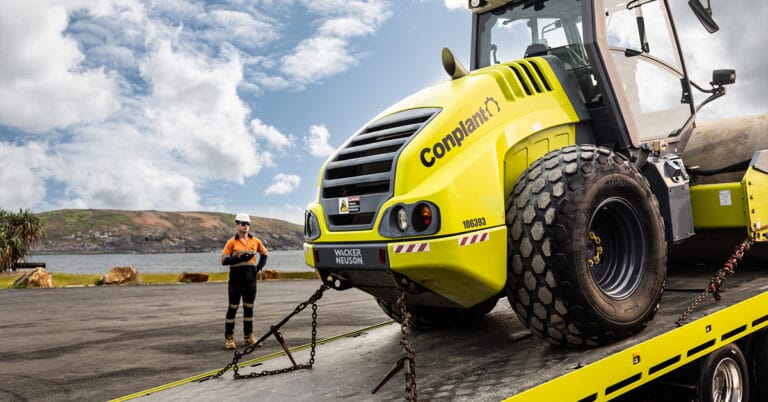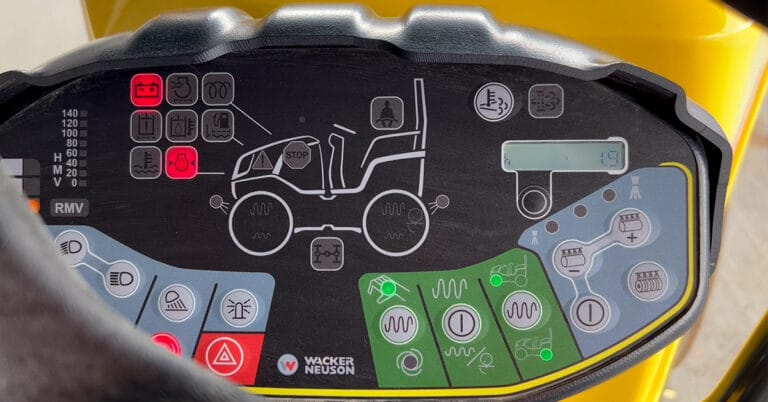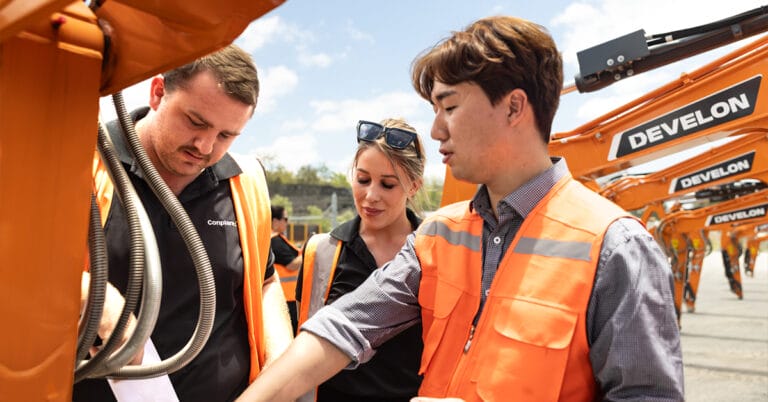Easy Guide to Heavy Equipment Servicing.
There’s nothing worse than when a big job grinds to a halt. There’s plenty of variables on construction sites: weather, deliveries, approvals, environmental obstacles — not to mention luck. You’d prefer to have them all in your favour, but what really matters is controlling what you can. That means taking care of your equipment.
Heavy equipment is the backbone of construction projects. When your biggest tools aren’t functioning properly, you’re potentially looking at a lot of costly downtime. Regular servicing of this machinery is vital for construction managers, site supervisors, and machine operators in Australia to maintain peak performance and deliver results on time.
This guide will cover how to keep your equipment in top condition, the warning signs that your equipment is due for servicing, and what steps are involved in construction equipment maintenance.
Contents:
The Importance of Heavy Equipment Servicing
Signs That Heavy Equipment Needs Servicing
The Importance of Heavy Equipment Servicing
Heavy equipment is built to take a beating, right? It should stand up to tough conditions and whatever gets thrown at it. It’s robust, sure. But it still needs to be operated responsibly, with regular inspections and maintenance to maximise uptime.

Maintaining heavy equipment regularly is essential for a number of reasons, including:
- Preventing Breakdowns
Regular servicing helps to identify potential issues before they escalate into major problems, preventing unexpected breakdowns that can significantly delay construction progress. For example, corrosion from lack of oil or overheating due to lack of coolant will quickly lead to problems.
- Boosting Efficiency
Well-maintained equipment operates more efficiently, which lowers fuel consumption and improves overall productivity on site.
- Prolonging Lifespan
Routine maintenance extends the lifespan of machinery, ensuring a better return on investment by keeping equipment in optimal condition for longer periods. When it comes to compaction rollers, the little things make a big difference. Skipping a daily check, neglecting a 250-hour service, or even improper operation can set off a chain reaction of wear and tear. On the flip side, a well-maintained roller can easily outlive its neglected counterpart, lasting twice as long and saving you a bundle in the long run.
- Ensuring Safety
Regular checks help ensure that all safety features — such as Roll Over Preventative Systems and Collision Avoidance Systems — are functioning correctly, reducing the risk of accidents on site. This keeps workers happy, healthy, and available. Not to mention avoiding potentially costly legal proceedings.
- Compliance with Regulations
Speaking of legal proceedings, adhering to maintenance schedules is a must in order to comply with legal and safety standards, avoiding potential fines and other legal issues.
Signs that Heavy Equipment Needs Servicing
Of course, equipment maintenance is meant to be proactive and preventative. So, any upkeep should be routine rather than reactive. But if you do spot any of the following signs, it’s definitely time to take action.
Unusual Noises
Strange sounds such as grinding or knocking are often a sign of mechanical issues that require attention. It’s not always easy to pick out these noises among the general humming and clanking of an active site, but experienced operators should be able to notice when something doesn’t sound right.
Decreased Performance
Any drop in performance or efficiency of your equipment, such as slower operation or reduced power, may indicate underlying problems.
Fluid leaks
The presence of oil, hydraulic, or coolant leaks is a clear indicator of equipment issues that need to be addressed immediately.
Excessive Smoke
Where there’s smoke — well, there’s probably a glaring equipment fault that needs urgent attention. Increased exhaust smoke can be a sign of engine problems or fuel system issues.
Warning Lights
We’ve all ignored the occasional warning light on our car dashboard. With heavy equipment, the stakes are a little higher. Ignoring dashboard warning lights can lead to significant mechanical failures. By recognising these signs early, operators can prevent minor issues from turning into costly repairs or prolonged downtime.

Does your compaction equipment need a tune-up? Book a service.
Common Services Included in Heavy Equipment Maintenance
Typically, heavy equipment maintenance typically involves several key steps to keep things running smoothly, ensuring reliability and longevity.
- Oil Changes
- Filter Replacements
- Fluid Checks
- Inspections for Wear & Tear
- Battery Testing & Replacement
- Brake Inspections
Sometimes, equipment breakdowns can be fixed with onsite repairs, which may involve replacing parts. If more than a quick fix is needed, Conplant can float new equipment to the site while your old machine is being repaired.


Conplant's Service Offering
At Conplant, we service any site, right across Australia. Wherever you’re working, our highly experienced service team is on hand to help.
Whether you need running repairs, refurbishment, scheduled maintenance, equipment upgrades, spare parts, replacements, or emergency field services — we’ve got you covered.




